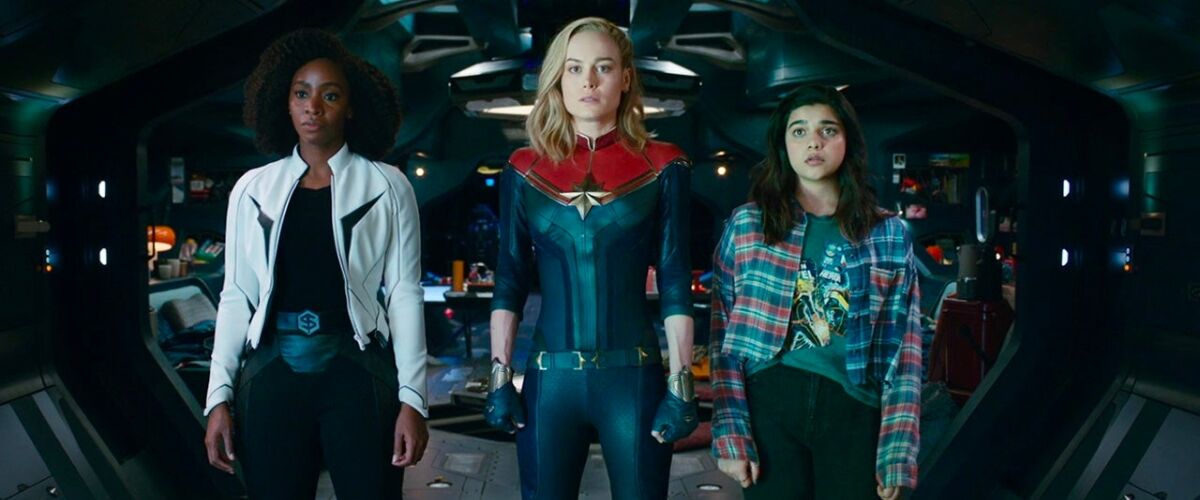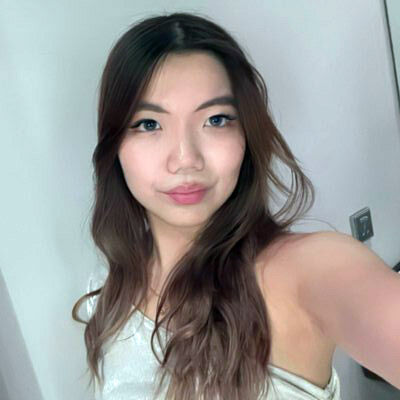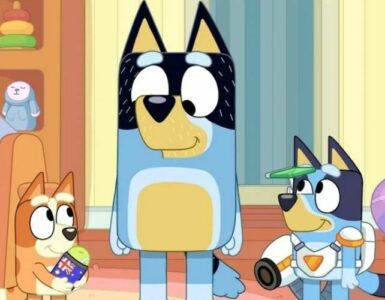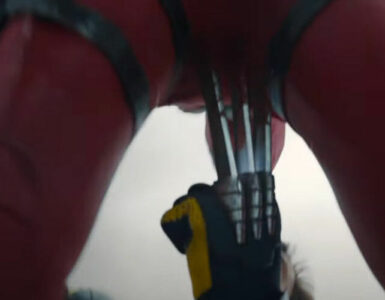- Shares
- 88
The Marvel Cinematic Universe’s (MCU) first female-led ensemble film, ‘The Marvels‘ has landed as part of its Phase 5 series of films, and boy does it open up a portal to some interesting story telling.
Phases 4 through 6 have been established as the “Multiverse Saga” for the MCU and this sequel to 2019’s Captain Marvel, starring Brie Larson as Carol Danvers, Teyonah Parris as her old friend Monica Rambeau, and Iman Vellani as Kamala Khan aka Ms Marvel, has thrown the door wide open for the crossover that movie and comic book fans have long clamoured for.
**Warning: MAJOR spoilers for The Marvels ahead.**
The mid-credits marks the MCU debut of X-Men co-founder, Hank ‘Beast’ McCoy, portrayed once again by Kelsey Grammer. Grammar played the furry scientist in 20th Century Fox’s X-Men: The Last Stand aka X3, which has been regarded as taking place in its own universe separate from the MCU, that is until Marvel Comics owner Disney acquired Fox.
That said, the movie raises several questions about the MCU, so let’s get into them!
1. Is Kamala Khan assembling the Young Avengers or A-Force?
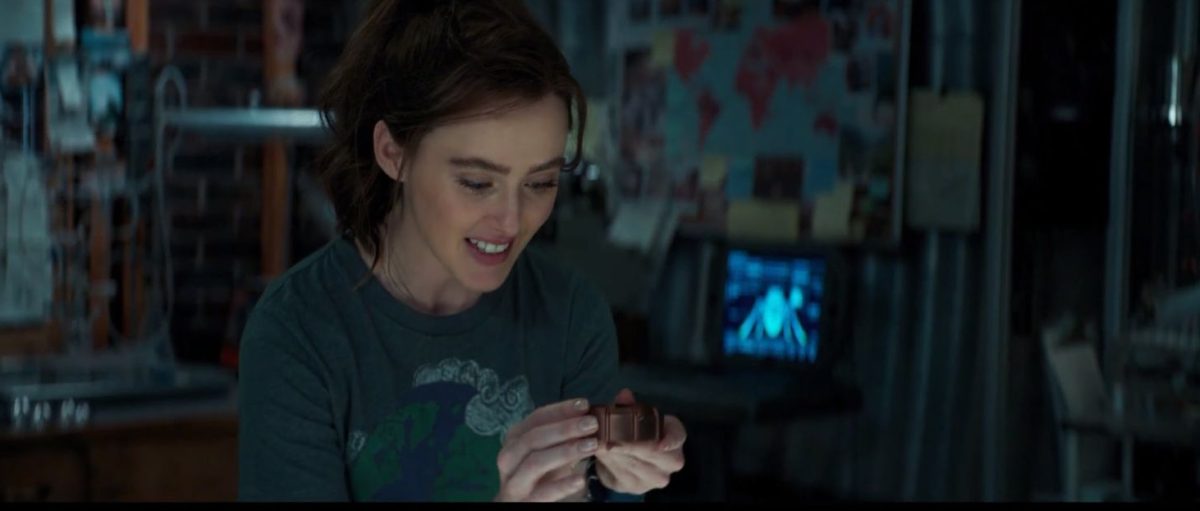
After Phase 3 of the Marvel Cinematic Universe, it was obvious that Marvel Studios is looking to introduce a new breed of younger heroes, of which there have been several – Ms Marvel (Kamala Khan), Hawkeye (Kate Bishop), Ironheart (Riri Williams), Stature (Cassandra Lang) and the new Black Panther (Shuri). There were hints that this could be a new group of Young Avengers, as Hawkeye and Stature were both key members in the comics.
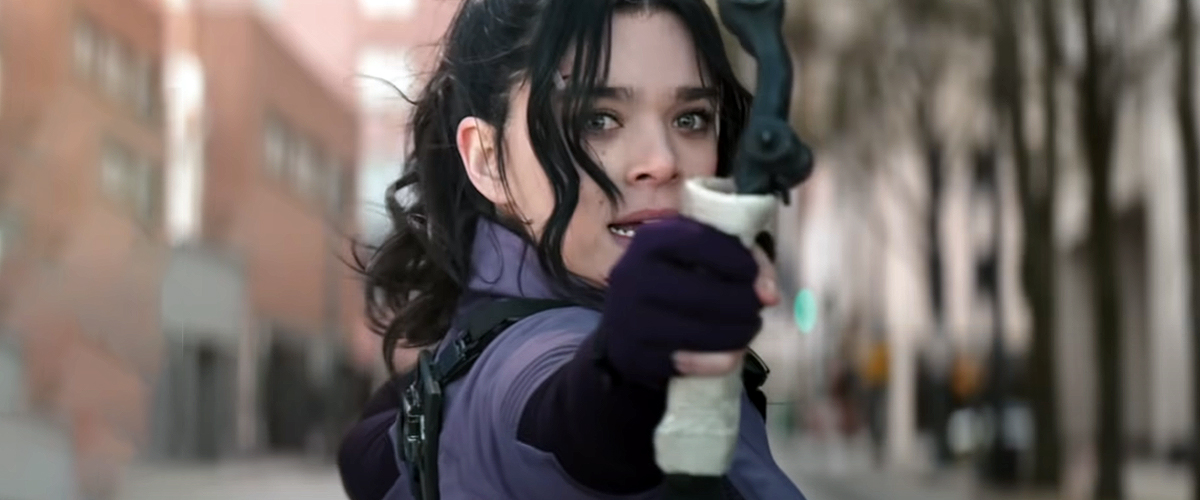
And as it so happens, Kamala susses out Kate at the end of The Marvels and brings her in, which establishes that there are plans to bring a new breed of heroes together.
But Avengers: Endgame also gave us a hint of an all-female group of heroes – Valkyrie, Wasp, Scarlet Witch, Captain Marvel, Gamora, etc – if only for a brief moment, and is it a coincidence that all the young heroes listed above happen to be female? Young Avengers Force maybe?
2. Why isn’t Kamala wearing the other Quantum Band aka Why is Carol ‘Captain Marvel’ Danvers wearing the other Quantum Band?
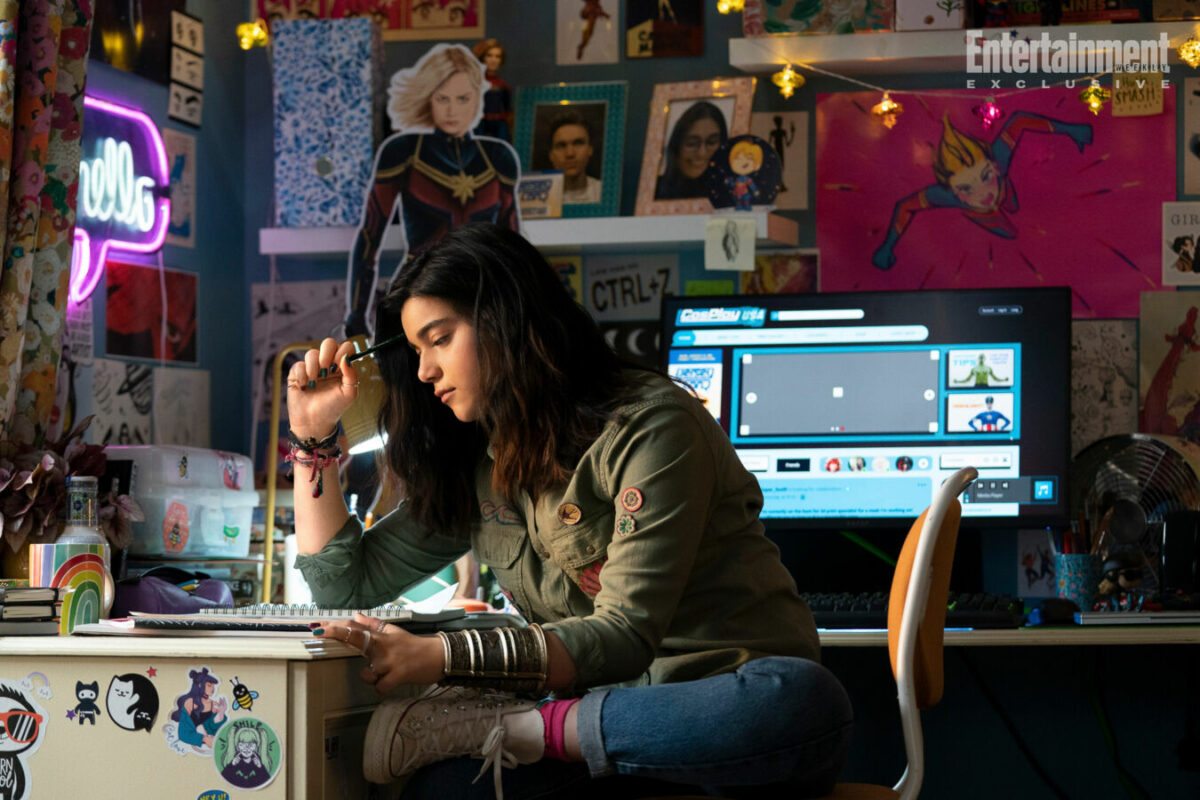
Ms Marvel gets her amazing abilities from a mysterious band and as it turns out, Ms Marvels villain Dar-Benn found the other one. But when used together, the bands killed Dar-Benn but also opened a doorway to another universe. Captain Marvel also identified the bands as Quantum Bands, powerful ancient artifacts from Kree mythology.
At the end of the movie, Kamala, a mutant, wore both to power Monica Rambeau (Teyonah Parris) who closed the doorway but sealed herself on the other hand. When Kamala walked out of her ship to meet Nick Fury on Earth, sharp-eyed fans would have noticed her only wearing one band – the one she initially had.
Later on, we see Carol wearing the other one, but with her power level, why does she need it? Even if she used it to ignite Hala’s sun, why would she hold on to it?
3. Why didn’t ‘The Marvels’ address the Celestial in the middle of the Indian Ocean? So far, none of the titles released after “The Eternals” have.
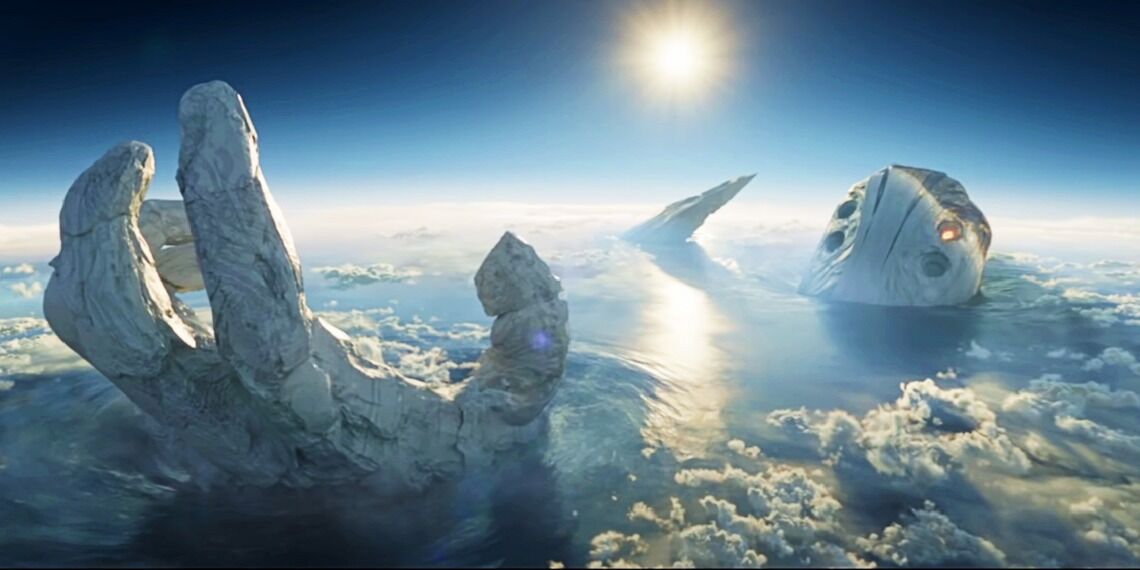
The Eternals (2021) movie introduced a myriad of narratives, but one element remained conspicuously unaddressed in subsequent MCU titles, including The Marvels. That film revealed a group of immortals who discovered their true purpose: to nurture Earth’s population until it could energise a Celestial lying dormant within the planet. Though the Eternals thwarted this event, referred to as the Emergence, and saving Earth, it left a tangible mark: a colossal portion of the Celestial Tiamut protruding from the Indian Ocean. This remarkable sight, a hand and part of a head rising above the ocean poses numerous unanswered questions.
This near-catastrophic event, however, hasn’t reverberated throughout the MCU as one might expect. Thor: Love and Thunder briefly acknowledges the existence of Celestials, but no other Phase Four title, including The Marvels, delves into the ramifications of Tiamut’s Emergence.
The absence might be attributed to potential continuity issues or even last-minute changes in storytelling. Despite these possibilities, the lack of acknowledgment of such a pivotal event in the MCU narrative remains a curious anomaly. Unless Marvel Studios intends to retcon this film down the road, and have it take place in an alternate universe in the MCU.
4. Where did King Valkyrie bring the Skrull refugees?
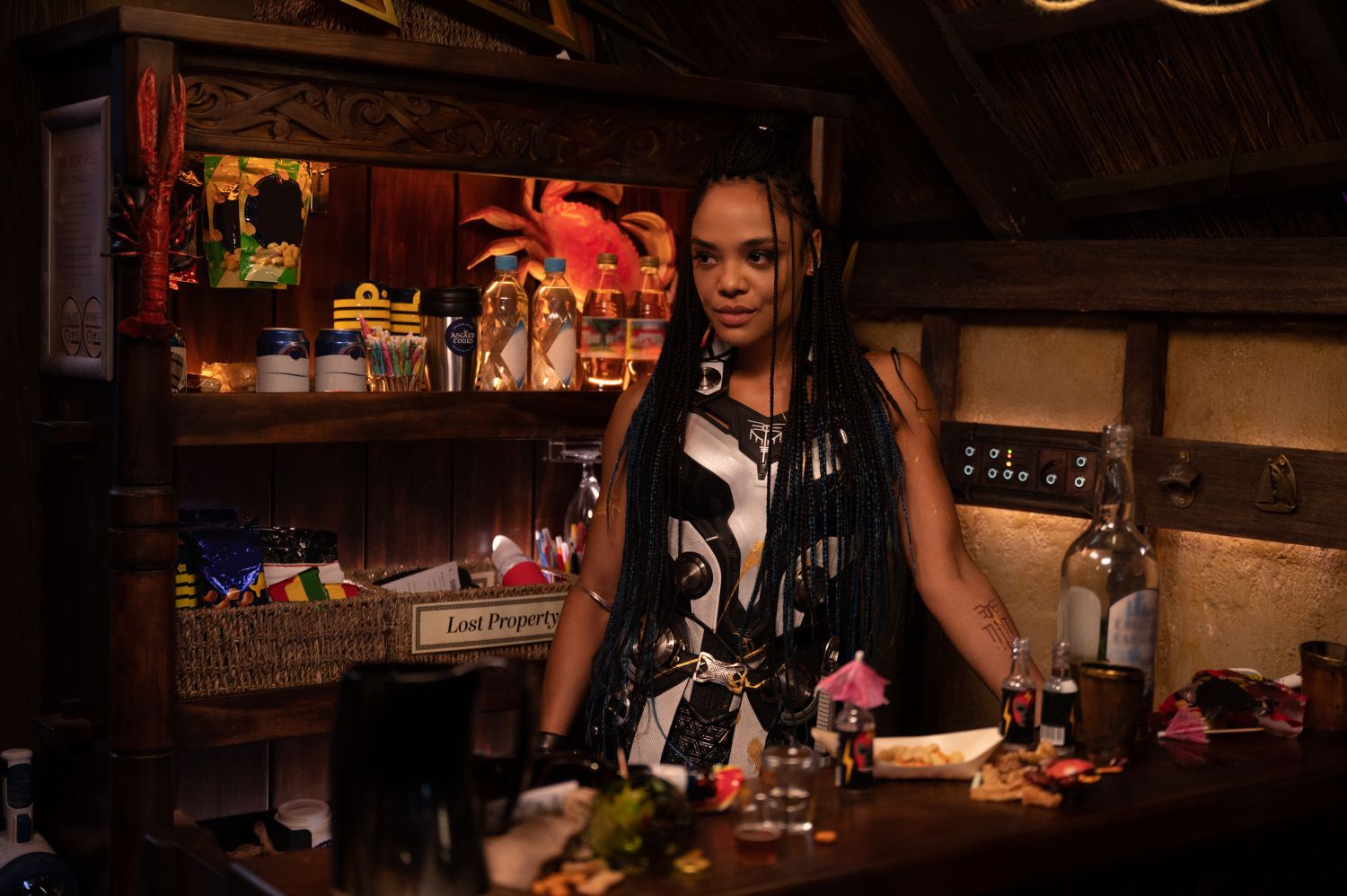
Director Nia Dacosta is friends with actress Tessa Thompson aka King Valkyrie, so it wasn’t that much of a surprise when she appeared in a cameo, helping evacuate the Skrulls that Carol rescued. Her use of the Bifröst (the rainbow bridge) meant the group was transported away but after the events of Disney+’s Secret Invasion, which was about the high number of Skrulls on Earth, would the Skrulls be brought to Earth, and to New Asgard, or did Valkyrie bring them to a new planet in the galaxy?
And if so, where?
5. Battle of the Bands – If Ms Marvel is wearing the Quantum Bands, where are the Nega Bands?
In Marvel Comics, the millennia old Nega-Bands were powerful relics of the Kree Empire and the ones that had a connection with the Captain Marvel legacy. The Nega-Bands were first used by Kree spy, Captain Mar-Vell, and have since been used by several heroes within the Captain Marvel legacy.
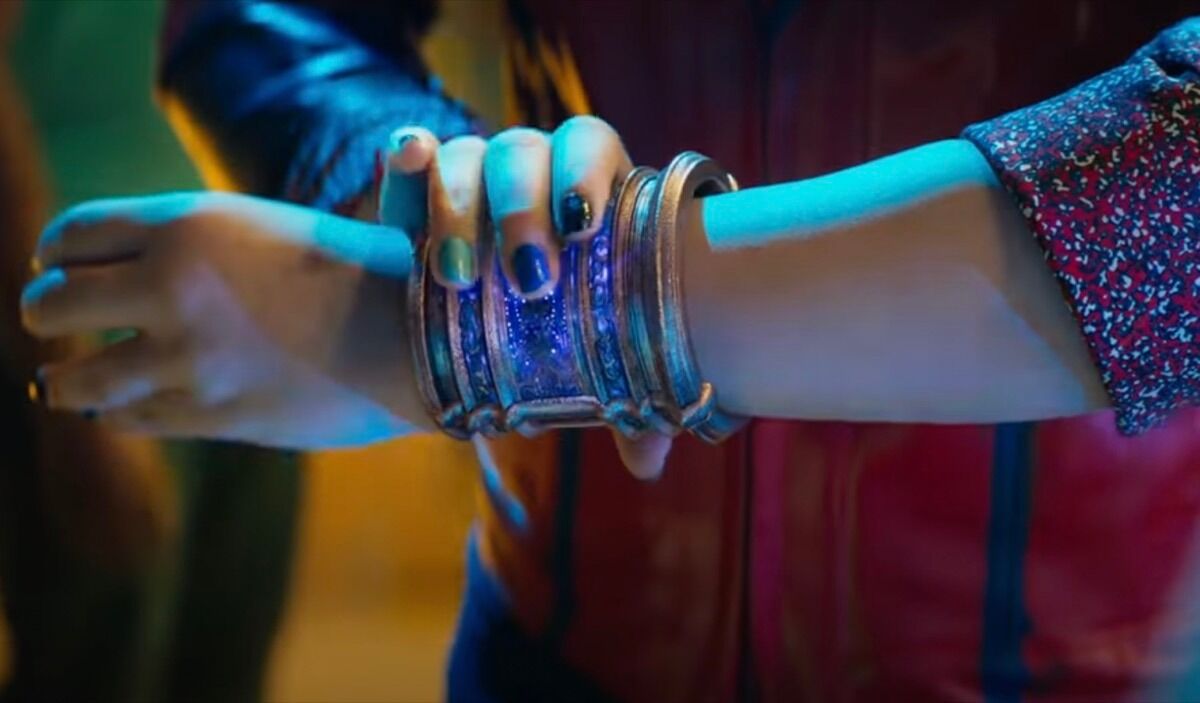
There have been several pairs of Nega Bands, sometimes crafted as rings. Quantum Bands on the other hand, are the precursor of the Nega Bands, and were used by the hero Quasar. These are more powerful, and only one pair exists. Is the MCU combining both?
If you caught the mid-credits scene when Monica Rambeau wakes up in another universe and sees her mother, Maria (Lashana Lynch), you might recognise her red and white costume to be that of Binary. In Marvel comics, Binary is another name for Carol Danvers, when her powers were altered slightly, and she joined the X-Men under a different name. It looks like Binary is a member of the X-Men in this alternate universe and like the Captain Marvel who appeared in Doctor Strange in the Multiverse of Madness, both these realities’ Captain Marvel is Maria Rambeau.
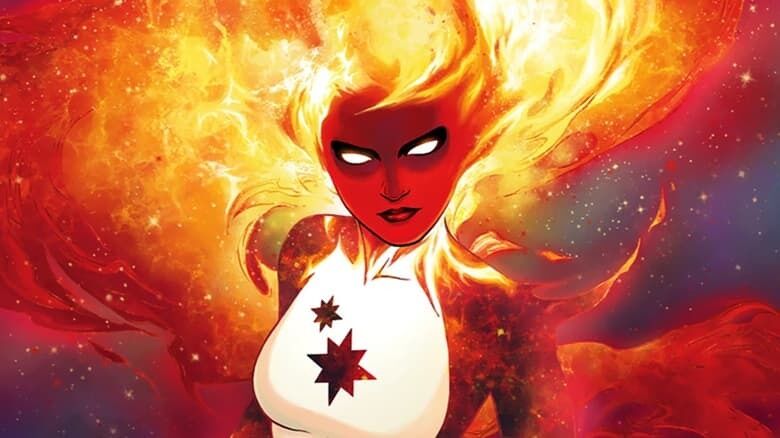
When Binary removes her shawl, we see her in full costume, sans the familiar star logo on her chest, but Binary is wearing both bands – are these her universe’s Quantum Bands, or Nega Bands? If they are the former, does it mean Binary can open a doorway back to the MCU’s main universe?
6. Will there be a sequel revolving around Captain Marvel trying to find and save Monica?
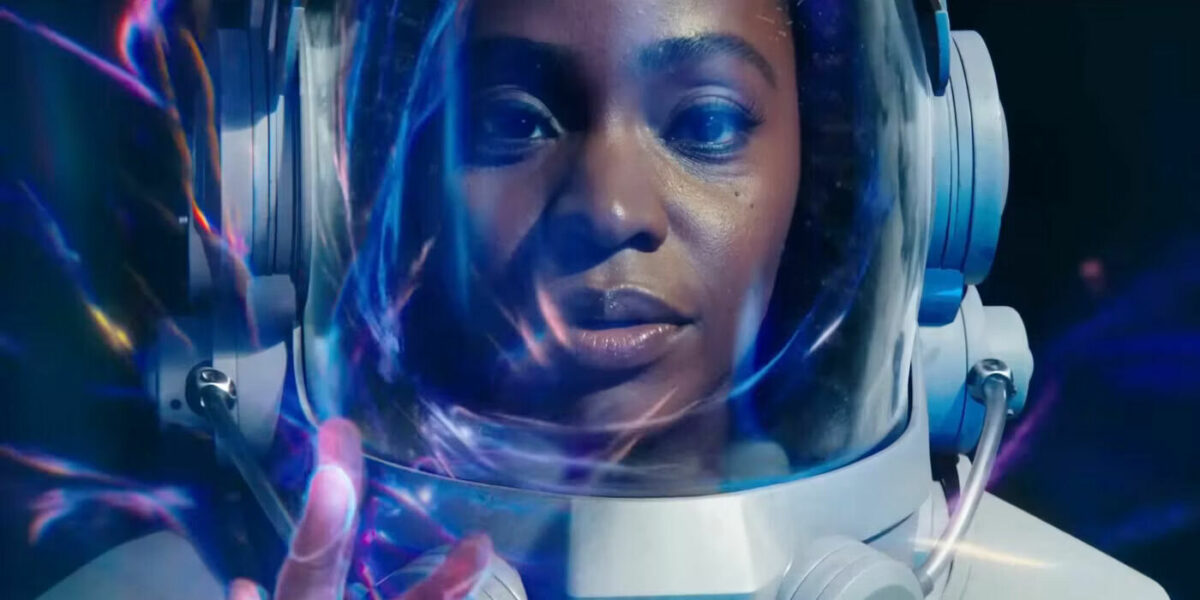
Dar-Benn used both bands, opened the portal and died. Captain Marvel knows Ms Marvel can use both bands, so will they use both bands to open the doorway to the other universe to save Monica? Does this mean we will get a sequel to The Marvels? Given that the movie has the smallest box-office debut in MCU’s history, it seems rather unlikely.
7. Why did the Quantum Bands kill Dar-Benn when used together, but Kamala Khan could use them together just fine?
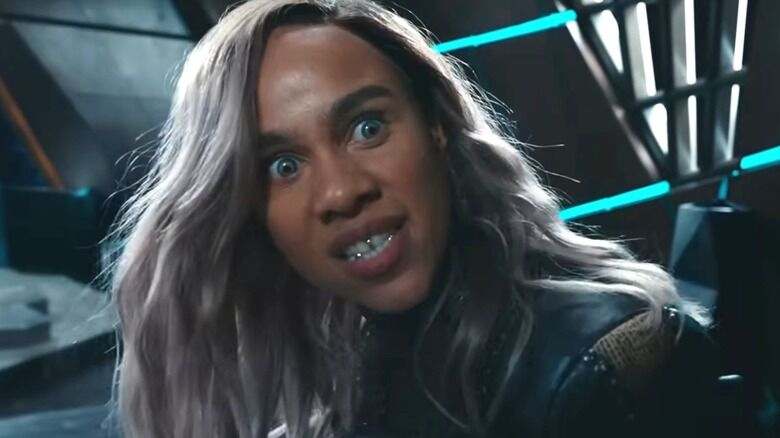
Ordinary living things have been shown incapable of handling mythical weapons in the MCU. Tony Stark died while handling the Infinity Stones within the Infinity Gauntlet, and Peter Quill would have died handling the Power Stone, if not for the fact that he’s half a Celestial. Dar-Benn perished when using both Quantum Bands, but Kamala Khan did not.
It was revealed in the Disney+ series Ms. Marvel, that Kamala is a mutant, and this discovery came in the series’ final episode, where Bruno, Kamala’s friend, delves into her family’s DNA. His research uncovers that Kamala’s superhero powers stem from a genetic mutation, a trait her brother Aamir lacks. This mutation likely grants Kamala a special connection with the Quantum Bands, enabling her to use them without harm. The series also subtly nods to Kamala’s mutant identity through an auditory hint – the faint strains of the iconic X-Men theme in the film, further cementing her status as a mutant within the MCU.
8. How did Dar-Benn come into possession of the Universal Weapon, previously used by Ronan the Accuser? Was his Cosmi-Rod the Universal Weapon?
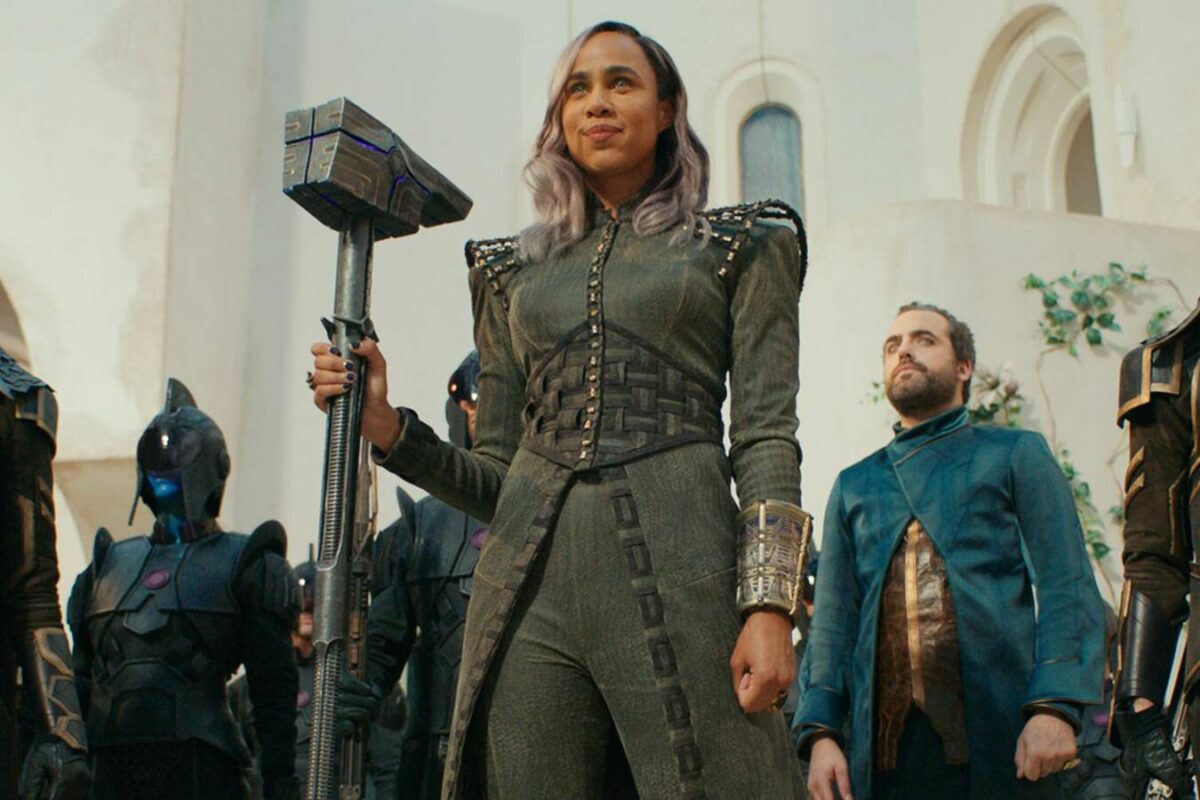
It’s hammer time. In The Marvels, a familiar weapon from the MCU makes a reappearance with a twist. This time, the powerful hammer, previously known as the Cosmi-Rod and used by Ronan the Accuser in Guardians of the Galaxy (2014), is in the hands of Dar-Benn, the movie’s main antagonist. Dar-Benn, a Kree driven by vengeance against Carol Danvers, wields what is now termed the Universal Weapon.
Ronan the Accuser’s Cosmi-Rod held the Power Stone, but it was ultimately removed. So are they the same weapon? While both weapons look identical, a key difference lies in its power source. Unlike Ronan’s hammer, which derived its formidable power from the Power Stone, Dar-Benn’s version lacks this enhancement, though Carol Danvers acknowledges that it is still a powerful weapon. We think Ronan found the Universal Weapon and upgraded it into the Cosmi-Rod with the use of the Power Stone. Once the stone was removed, it reverted back to being the Universal Weapon.
However, the question still stands – where and how did Dar-Benn acquire the Universal Weapon?
9. Is the alternate universe we see the actual 20th Century Fox’s X-Men universe, or a version of that universe?
The appearance of Hank ‘Beast’ McCoy in the mid-credits scene points towards the introduction of 20th Century Fox’s massive 13-film X-Men movie franchise into the MCU, since Kelsey Grammer reprises his role as the furry blue creature.
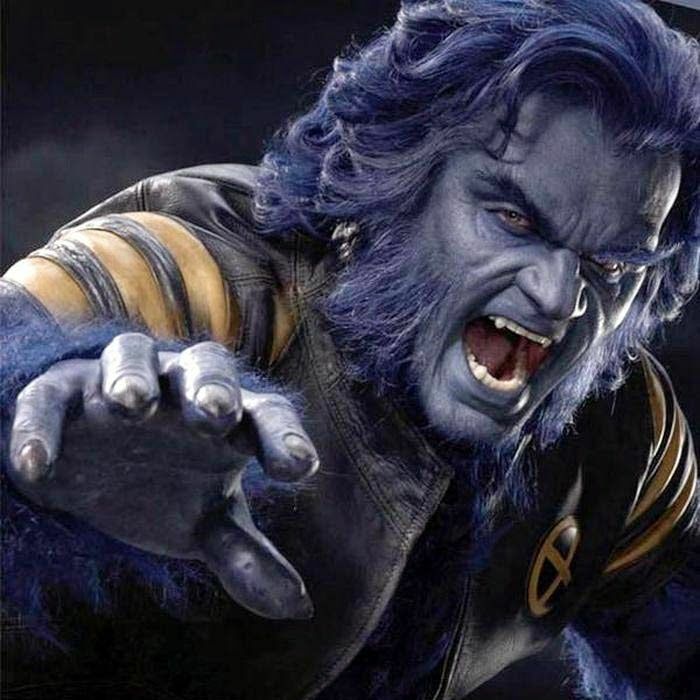
But if you were a fan of the X-Men film series, you would know that there are narrative conflicts within the movies in that franchise, where events don’t line up across the films, and dead characters can return without any explanation.
So is this universe the original X-Men film universe, or is this a version of that universe where all the events from the live-action X-Men universe takes place, but it is also streamlined such that inconsistencies have been removed or rectified?
Fox was also responsible for three lacklustre Fantastic Four films – are they part of this universe Monica is currently in, and if not, which of the Fantastic Four movies/movie are it, since the third Fantastic Four movie serves as a reboot? It would be fun to have the reboot film be recognised in some way, since Michael B Jordan, who played Erik Killmonger in the MCU, also played Johnny Storm in the Fantastic Four reboot.
10. Who is Binary, Captain Marvel’s alter ego?
The Marvels takes a dramatic turn in its final act when Monica Rambeau bravely seals a rift torn in reality by the Quantum Bands. This heroic act leaves her stranded in an alternate dimension, and the movie’s post-credits scene reveals Monica waking up in a hospital, facing a woman resembling her deceased mother, Maria Rambeau. In this universe, Maria is not only alive but also embodies the cosmic character Binary, known for her star-like powers.
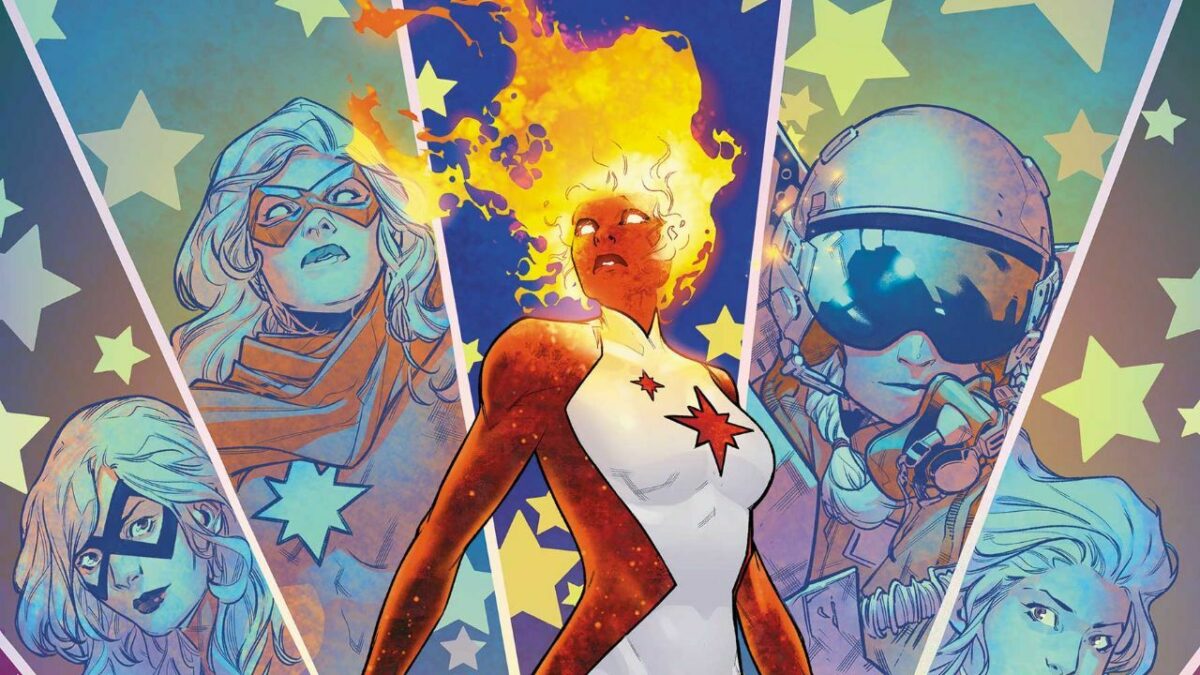
The character of Binary has a rich history in Marvel Comics. Originally Carol Danvers, she transformed into Binary after the alien Brood’s experiments unlocked her latent abilities to generate various forms of energy. In the comics, her time with the X-Men was under the guise of Binary.
In 2021 comic developments, Carol recreates her Binary form to escape imprisonment, leading to the emergence of a separate Binary entity. Does the movie adaptation here hint at this complex legacy through Maria Rambeau’s portrayal. Or since Maria took on the mantle of Captain Marvel in Doctor Strange in the Multiverse of Madness, can we also regard that the X-Men version has this Captain ‘Maria Rambeau’ Marvel take on her Binary form to be part of the mutant team?
While her exact powers remain unknown, her appearance in the twin-starred suit suggests a strong connection to the Binary persona. That being said, will she join the upcoming Deadpool 3 or an X-Men film in the future?
Bonus Question: With Kamala recruiting Kate Bishop, does this make her the new Nick Fury, or is she the new leader of whatever superhero group she is recruiting for?
In the dynamic finale, Kamala Khan takes a pivotal step towards assembling a new superhero team. Her visit to Kate Bishop (Hailee Steinfeld), along with Lucky the Pizza Dog, echoes the iconic recruitment scenes of Nick Fury in 2008’s Iron Man. Kamala, exhibiting a Nick Fury-esque charisma, hints at forming a team and even references Fury’s memorable line to Tony Stark.
Her interaction with Kate Bishop, humorously noting Kate’s age, seemingly signals the beginnings of the Young Avengers and the MCU’s moving towards assembling a youthful superhero team, previously hinted at but never fully realised.
Kamala’s initiative in forming the Young Avengers is intriguing, considering the original Avengers are still active. However, the groundwork for this young team has been steadily laid throughout the MCU. The Young Avengers, originating from a 2005 comic storyline, have a rich history, with characters like Eli Bradley from The Falcon and the Winter Soldier and Wanda and Vision’s kids (who grow up to become Wiccan and Speed) from WandaVision, who were actually co-founders in the comics. The multiverse opens up even more possibilities, with alternate versions of characters like Wiccan and Speed.
While no concrete Young Avengers project has been announced for Phase 6, the potential roster is expansive, including America Chavez from Doctor Strange in the Multiverse of Madness, and Skaar from She-Hulk. Kamala’s proactive role in this formation positions her as a pivotal figure in the MCU, echoing the foresight of Nick Fury in uniting heroes for greater challenges ahead.

